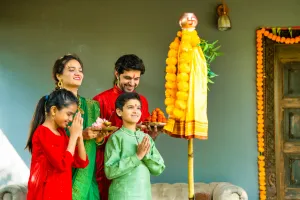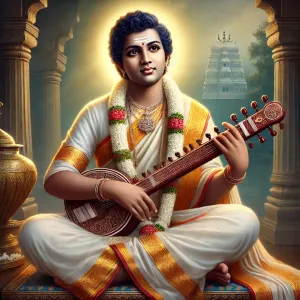"Pongal," which means "to boil over" in Tamil, perfectly captures the abundance and joy of this vibrant harvest festival. Tamil communities worldwide continue to cherish this celebration as they prepare for Pongal 2025.
The mid-January festival brings families together for prayers and community bonding while honoring the Sun God (Surya). Each of the four days carries its own special meaning and traditions. People cook sweet Pongal with freshly harvested rice and milk. They decorate their cattle with care and create beautiful kolam patterns using rice powder on the ground.
This piece will help you discover the essence of Pongal 2025 celebrations. You'll learn about time-honored recipes, customs, and modern ways to celebrate that respect this ancient festival's heritage.
Understanding Pongal 2025 Dates and Significance
Let's discover the schedule and rich heritage of Pongal 2025, a festival that brings together nature, agriculture, and Tamil culture.
Key Dates for Pongal 2025 Celebration
Pongal 2025 will be celebrated Here's the complete schedule:from January 14 to January 17
· Bhogi Pongal - Tuesday - January 14
· Thai Pongal - Wednesday - January 15
· Mattu Pongal - Thursday - January 16
· Kaanum Pongal - Friday - January 17
Historical Origins and Development
This magnificent festival's roots go back to the Sanskrit Puranas mention it too, though it started as a Dravidian harvest festival. Historical records reveal that young women during the Pallava dynasty (4th to 8th Century AD) practiced special rituals called 'Pavai Nonbu' during the Tamil month of Margazhi.Sangam Age (200 B.C. to 300 A.D.)
Cultural and Agricultural Significance
Pongal marks the sun's six-month path northward (Uttarayan) and signals winter's end. This astronomical event deeply resonates with agricultural communities across southern India.
The festival's meaning covers:
· Gratitude to nature and the Sun God (Surya) for agricultural abundance
· Recognition of cattle's vital role in farming
· Thanks to all creatures involved in agricultural life
· Celebration of community bonds and rural traditions
The sort of thing I love is how this ancient celebration still brings communities together today, especially in Tamil Nadu, where it remains one of the year's most cherished festivals.
The Four Sacred Days of Pongal Festival
Let us take you through Pongal's four amazing days. Each day brings its own special meaning and traditions.
Bhogi Pongal: Preparation and Renewal
Bhogi kicks off the festival as a day of new beginnings. Families start their day by really cleaning their homes and getting rid of old belongings. Everyone gathers around a traditional bonfire to burn unused items, which helps let go of past burdens. The celebrations come alive in the evening as people dance and sing around these bonfires to honor Lord Indra.
Thai Pongal: Sun God Worship

The festival's main celebration happens on the second day. Women start their morning by creating beautiful kolams (floor designs) with rice paste . The Pongal preparation becomes more than just cooking - it's a sacred ritual. A decorated earthen pot sits in direct sunlight, looking beautiful with turmeric plants and flower garlands. People first offer the traditional sweet Pongal to Surya (Sun God) and Ganesha before sharing it with family and friends.
Mattu Pongal 2025: Honoring Cattle

On January 15, Pongal brings a special day to thank our cattle. This celebration holds deep meaning as we honor these sacred animals vital to farming. The festivities include:
· Bathing the cattle early in the morning and decorating them with:
· Colorful garlands
· Painted horns
· Bells and ribbons
The cattle get special treats like bananas, sugarcane, and the traditional Pongal dish. Farmers lead colorful processions with their decorated cattle through villages. These parades create a festive mood that shows our deep bond with these noble animals.
Essential Pongal Dishes and Recipes
These cherished Pongal recipes have been passed down through generations in our family. The original recipes explore both sweet and savory variations that are the foundations of our festival celebrations.
Traditional Sweet Pongal Preparation
Sweet Pongal (Sakkarai Pongal) has earned its sacred place in our temple offerings. We make this special dish . and add jaggery to create the perfect sweetness. Here's our traditional ingredient proportion:with rice and yellow moong lentils in a 1:1 ratio
· Rice - 1 cup
· Moong Dal - 1 cup
· Jaggery - ¾ cup
· Ghee - ¼ cup
· Cardamom - ¼ tsp
Savory Ven Pongal Recipe
Our savory Ven Pongal is a comforting start to festival mornings. We cooked this creamy dish with rice and moong dal, and its distinctive flavor comes from black pepper, cumin, and curry leaves. These authentic tips make the dish perfect:
· Roast rice and dal with ghee before cooking
· Use Sona Masuri or raw rice for best results
· Add generous amounts of ghee for temple-style flavor.
Regional Pongal Variations
The sort of thing I love about our Pongal dishes is their regional adaptations. Chettinad's specialty is . All the same, the Kongunadu region makes their special Arisi Paruppu Sadam, while coastal areas add their distinctive seafood elements to their festival spreads.Kavuni Arisi, a black sticky rice pudding with coconut milk
Modern Pongal Celebration Guide
The ever-changing world has brought remarkable changes to urban Pongal celebrations. Let's head over to see how we can mix our cherished traditions with modern lifestyles.
Urban Celebration Tips
Our festival spirit remains strong even in apartment living. Community celebrations thrive in urban settings where residents organize shared cooking sessions and cultural events. You can start by marking a safe area for the traditional bonfire. Then set up group kolam competitions and plan a community lunch where families bring their special dishes.
Eco-friendly Festival Practices
Today's generation takes responsibility to protect the environment during celebrations. Here's how celebrations are becoming greener:
· Plastic Decorations Replaced by Natural flowers and leaves
· Synthetic Colors Replaced by Organic kumkum and turmeric
· Plastic Banners Replaced by Cloth or paper alternatives
· Single-use Utensils Replaced by Banana leaves and clay pots
Incorporating Technology in Traditions
Technology has seamlessly blended with our modern Pongal celebrations while preserving our cultural essence:
· Virtual family gatherings connect relatives across cities and countries
· Social media platforms help document and share our celebrations
· Online competitions and virtual cooking sessions bring communities together
Shopping malls and cultural centers buzz with celebration energy through multimedia displays and artistic expressions. Schools and workplaces now host Pongal events that promote cultural understanding among various communities.
Conclusion
Pongal proves our enduring cultural heritage. Modern life brings rapid changes, yet we have adapted our cherished traditions to contemporary settings without losing their essence. This harvest festival reminds us of our deep connection to nature, agriculture, and community bonds.
The four-day celebration starts January 14, 2025, and brings meaningful moments for everyone - from traditional sweet Pongal preparation to green urban celebrations. Of course, we draw kolams in apartment complexes or connect with family through video calls, but the spirit of gratitude and togetherness stays strong.
FAQs
Q1. When is Pongal celebrated in 2025?
Pongal 2025 will be celebrated from January 14 to January 17. The four-day festival begins with Bhogi Pongal on January 14, followed by Thai Pongal on January 15, Mattu Pongal on January 16, and concludes with Kaanum Pongal on January 17.
Q2. What is the significance of Pongal?
Pongal is a harvest festival that marks the sun's six-month journey northward, signaling the end of winter. It holds deep significance for agricultural communities, expressing gratitude to nature and the Sun God for abundance, recognizing the role of cattle in farming, and celebrating community bonds and rural traditions.
Q3. How is Sweet Pongal prepared?
Sweet Pongal, also known as Sakkarai Pongal, is prepared using a 1:1 ratio of rice and yellow moong lentils, with added jaggery for sweetness. The traditional recipe includes ghee and cardamom for flavor. It's typically offered in temples and shared with family and friends during the festival.
Q4. What are some eco-friendly practices for celebrating Pongal?
To make Pongal celebrations more environmentally friendly, you can use natural flowers and leaves instead of plastic decorations, organic kumkum and turmeric for colors, cloth or paper alternatives for banners, and banana leaves or clay pots instead of single-use utensils.
Q5. How are urban communities adapting Pongal celebrations?
Urban communities are adapting Pongal celebrations by organizing shared cooking sessions and cultural events in apartment complexes, holding community lunches, and using technology for virtual family gatherings. Many are also incorporating eco-friendly practices and using social media to document and share their celebrations while maintaining the essence of traditional customs.



